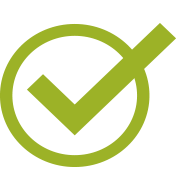Catalog Description
Prerequisite: Completion of HSCI 3 and BIOL 55 or BIOL 5 and BIOL 6 with grade(s) of "C" or better
Hours: 135 (108 lecture, 27 laboratory)
Description: Review human anatomy and physiology for surgical procedures and common disease states requiring surgical intervention. Also covers medications used during surgery. Concepts of microbiology and basic physics are discussed as they are applied to operating room procedures and practices. Introduces operating room protocols and procedures, aseptic techniques, disinfection, sterilization, instruments, and equipment. (letter grade only) (not transferable)
Course Student Learning Outcomes
- CSLO #1: Identify and evaluate the roles of the surgical technologist, the different types of healthcare facilities and the associated career paths of this discipline.\\n\\n
- CSLO #2: Identify and describe the physical concepts supporting the equipment used in the operating room.
- CSLO #3: Analyze and interpret the verbal medical terminology and nonverbal communication used in surgical settings to anticipate the needs of the surgeon.
- CSLO #4: Assess strategies for the attainment of effective team goals in the surgical environment.
Effective Term
Spring 2025
Course Type
Credit - Degree-applicable
Contact Hours
135
Outside of Class Hours
216
Total Student Learning Hours
351
Course Objectives
Lecture:
- Combine prefixes, word roots, and suffixes to create medical terms.
- Describe the characteristics of the professional surgical technologist and the credentialing options available.
- Define and describe the types of communication relationships, significance of content and tone, and methods for successful surgical team participation.
- Compare and contrast individual skills vs. collaboration roles and responsibilities.
- Identify and evaluate the skills and methods necessary to resolve conflict in the surgical arena.
- Review the American Hospital Association’s (AHA) Patient Care Partnership.
- Discuss principles of patient confidentiality, including verbal and written.
- Summarize the intentions of risk management.
- Evaluate personal employability qualities and develop an employment strategy that includes positive characteristics.
- Discuss the purpose of informed consent.
- Describe the documents found in the surgical patient's chart.
- Identify surgical incision selection based upon proper planning.
- Compare the different roles of the team members in the surgical setting.
- Describe the healthcare facility (HCF) departments that provide direct and indirect patient care.
- Evaluate the holistic needs of the surgical patient.
-
Identify the purposes, uses, and handling of the various types of equipment in the perioperative arena.
Laboratory:
- Compare the manufacturing characteristics and grades of surgical instruments.
- Apply knowledge of surgical instrumentation to specific surgical specialties.
- Explain the principles of selecting and handling the various types of surgical supplies.
- Evaluate the selection of surgical supplies.
- Describe the terms related to asepsis and sterile technique.
- Evaluate sources of contamination and pathology.
- Discuss principles and practices of sterile technique.
- Define terms related to sterile processing.
- Describe the manual methods used for cleaning surgical instrumentation and equipment.
- Analyze the requirements for sterilizing items.
- Describe the purposes of surgical attire.
- Explain the principles associated with and the proper methods for opening the sterile field and sterile items.
- Analyze special circumstances that require adjusting the normal routine for establishing the sterile field.
- Describe the considerations that are important to maintaining hand and skin integrity.
- Discuss the concepts of the surgical scrub as related to infection control.
- Describe and evaluate the methods of gowning and gloving.
- Describe the purpose of surgical counts.
- Explain the application of drapes to equipment and furniture.
General Education Information
- Approved College Associate Degree GE Applicability
- CSU GE Applicability (Recommended-requires CSU approval)
- Cal-GETC Applicability (Recommended - Requires External Approval)
- IGETC Applicability (Recommended-requires CSU/UC approval)
Articulation Information
- Not Transferable
Methods of Evaluation
- Classroom Discussions
- Example: Review various methods of cleaning different surgical instrumentation and equipment. Students must explain examples of various methods and engage in open-class discussion with peers.
- Skill Demonstrations
- Example: Students must properly perform sterile gowning and gloving. Students will be evaluated by direct observation following standard operating procedures.
Repeatable
No
Methods of Instruction
- Laboratory
- Lecture/Discussion
- Distance Learning
Lab:
- Following lecture and discussion, instructor will demonstrate proper hand-washing techniques. Students will practice skill and show proficiency before procedural check-off.
- Following lecture and discussion, instructor will demonstrate sterile gowning and gloving. Students will practice skill and show proficiency before procedural check-off.
Lecture:
- Instructor PowerPoint presentation on medical terminology. Students will discuss and practice using various word elements and structure to understand how to create medical terms.
Distance Learning
- Student will be given examples of manufacturing characteristics and grades of surgical instruments - e.g. Instrumentation, Equipment, and Supplies (Chapter 10) . Students will compare and contrast each while performing Critical Thinking Exercise on the characteristics and grade then submit via the LMS for grading. Instructor will assess each submission for accuracy as well as critical thinking of processes of each student.
Typical Out of Class Assignments
Reading Assignments
1. Students are assigned appropriate chapters from the Surgical Technology text that correspond to the lecture each week. Read section in textbook on aseptic techniques to prepare for discussion in class. 2. Read section in textbook on principles associated with the proper methods for opening the sterile field and sterile items and identify the key principles as well as outline the step for each technique.
Writing, Problem Solving or Performance
Student will engage in discussion board assignments such as comparing different manufacturing characteristics and grades of surgical instruments.
Other (Term projects, research papers, portfolios, etc.)
Students will read case studies related to lecture content such as the diverse operating room attire and various industry best practices.
Required Materials
- Surgical Technology
- Author: Joanna K. Fuller
- Publisher: Elseiver
- Publication Date: 2021
- Text Edition: 8
- Classic Textbook?:
- OER Link:
- OER:
- Workbook for Surgical Technology
- Author: Joanna K. Fuller
- Publisher: Elseiver Health
- Publication Date: 2020
- Text Edition:
- Classic Textbook?:
- OER Link:
- OER:
Other materials and-or supplies required of students that contribute to the cost of the course.
Appropriate scrubs and shoes.


